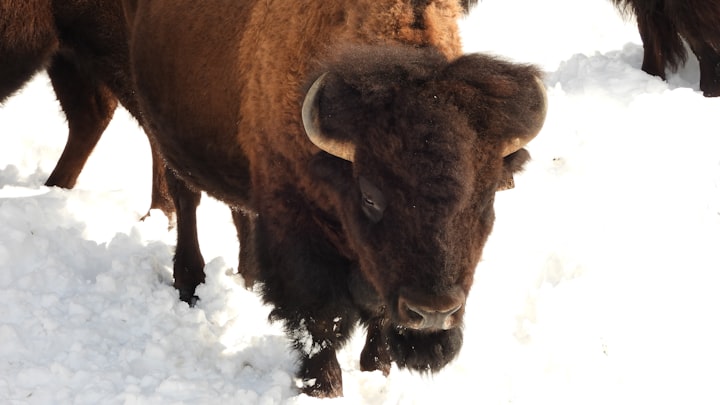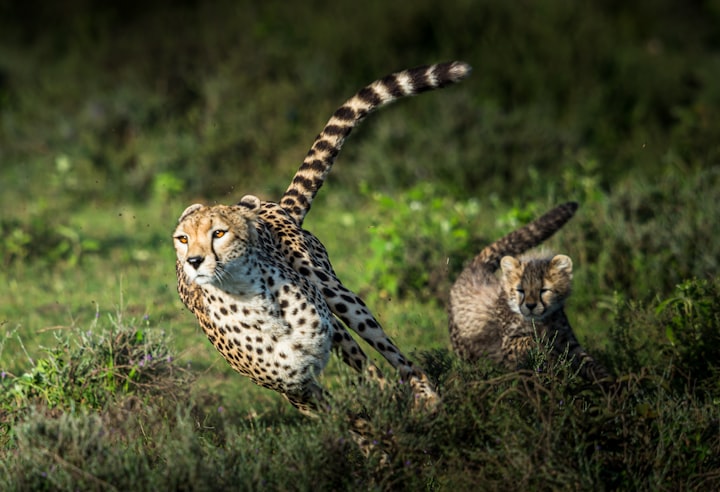Exploring the Enigmatic World of Earth's Largest Creatures
A Dive into the Unique Characteristics and Conservation Efforts for 15 Colossal Beings

In the vast realm of our planet's biodiversity, nature showcases its creativity through awe-inspiring giants that traverse the land, sea, and air. From the deep blue oceans to lush rainforests, these colossal creatures have evolved to dominate their respective environments, each bearing unique characteristics and adaptations that have captivated the curiosity of humans for generations.
**1. Blue Whale: The Gentle Giant of the Ocean**
The blue whale, Earth's largest-ever creature, presents a breathtaking spectacle as it navigates the world's oceans. Stretching up to 100 feet in length and weighing as much as 200 tons, these marine behemoths glide gracefully through their watery realm. Despite their size, blue whales feed primarily on tiny krill, filtering massive quantities through their intricate baleen plates. As an endangered species, the conservation efforts surrounding blue whales symbolize the resilience of these gentle giants.
**2. African Elephant: Land's Majestic Marvel**
Africa's savannas and forests are graced by the presence of the African elephant, the largest land animal. Males can stand up to 13 feet tall and weigh as much as 14,000 pounds. Their iconic tusks, essential for various tasks, have led to their endangerment due to illegal poaching for ivory. Efforts to preserve these intelligent and socially complex creatures involve habitat protection, anti-poaching initiatives, and community-based conservation projects.
**3. Saltwater Crocodile: Dominating the Waterways**
The saltwater crocodile, the largest living reptile, rules the estuaries and rivers of Southeast Asia and Northern Australia. With a length of up to 23 feet and a weight of 2,200 pounds, these apex predators demonstrate their prowess through their ambush hunting technique. Successful conservation programs in Australia demonstrate the potential for coexistence between humans and these mighty reptiles.
**4. Giraffe: A Towering Grace**
The savannas of sub-Saharan Africa are home to the giraffe, the world's tallest land animal. With their elongated necks and legs, these herbivores access hard-to-reach foliage and possess a unique cardiovascular system to regulate blood flow. Facing threats from habitat loss and poaching, giraffes' status as a vulnerable species necessitates sustained efforts for their conservation.
**5. Eastern Gorilla: A Lesson in Family Bonds**
Eastern gorillas, the largest primates, thrive in the rainforests of Central and Eastern Africa. With complex social structures and bonds, these creatures highlight the significance of community and intelligence within their species. Despite their challenges due to habitat loss and human conflict, conservation endeavors are making strides to protect these remarkable animals.
**6. Whale Shark: Gentle Giants of the Deep**
The ocean's depths are home to the gentle whale shark, the world's largest fish. Measuring up to 40 feet and weighing over 20 tons, these filter-feeders play a crucial role in maintaining marine ecosystems. Though they face threats from bycatch and habitat degradation, ongoing conservation initiatives are helping to secure their future.
**7. Ostrich: Fleet-Footed Giants of the Savannah**
The African savannas are ruled by the ostrich, Earth's largest bird. With speeds reaching up to 43 miles per hour, these flightless birds exemplify nature's remarkable adaptations for survival. Their distinctive appearance and sociable nature make them a symbol of Africa's vast and diverse landscapes.
**8. Kodiak Bear: The Mighty Monarch of Alaska**
Alaska's Kodiak archipelago is graced by the presence of the Kodiak bear, the largest land carnivore. With a standing height of up to 10 feet and weighing up to 1,500 pounds, these bears symbolize the wilderness of North America. Robust conservation efforts, including protected habitats and sustainable practices, have led to the preservation of these apex predators.
**9. Green Anaconda: Amazonian Giants**
The Amazon rainforest harbors the green anaconda, the world's heaviest snake. With lengths up to 30 feet, these constrictors demonstrate the intricate dance of predator and prey in one of the planet's most diverse ecosystems. Their role in maintaining balance makes them a testament to the intricate web of life in the Amazon.
**10. Chinese Giant Salamander: Guardians of Freshwater Ecosystems**
China's rivers and streams house the Chinese giant salamander, the world's largest amphibian. Weighing up to 110 pounds, these creatures contribute to the health of freshwater ecosystems through their role as top predators. However, habitat loss and pollution threaten their survival, necessitating dedicated conservation measures.
**11. Ocean Sunfish: Mysterious Giants of the Ocean**
The ocean sunfish, or mola mola, meanders through temperate and tropical oceans, its bizarre appearance captivating all who encounter it. Despite its size and otherworldly appearance, the sunfish plays a vital role in marine ecosystems, facing challenges from bycatch and pollution.
**12. Goliath Bird Eater Spider: Terrifying yet Intriguing**
The Goliath bird eater spider, the world's largest by mass, prowls South American rainforests with its imposing presence. Despite its name, it poses minimal threat to humans and has become a subject of fascination for arachnid enthusiasts.
**13. Flemish Giant Rabbit: Domesticity's Delightful Giant**
Belgium's contribution to the world of colossal creatures is the Flemish giant rabbit. Weighing up to 22 pounds, these gentle giants have found a place in the hearts of pet owners and breeders worldwide.
**14. Japanese Spider Crab: Mysteries of the Deep**
Japan's waters harbor the Japanese spider crab, a testament to the enigmatic depths of the ocean. With leg spans reaching 12.5 feet, these crabs are symbols of the wonders yet to be discovered beneath the waves.
**15. Capybara: South America's Sociable Stalwarts**
In South America's wetlands, the capybara, the world's largest rodent, thrives. Weighing up to 140 pounds, these social creatures embody the beauty of interconnected ecosystems, reminding us of the intricate balance that sustains life.
In the face of ever-changing environments and human pressures, these colossal beings stand as reminders of the delicate equilibrium that sustains our planet's biodiversity. Through dedicated conservation efforts, research, and public awareness, we can secure the future of these remarkable creatures, ensuring that their unique legacies endure for generations to come.






Comments
There are no comments for this story
Be the first to respond and start the conversation.